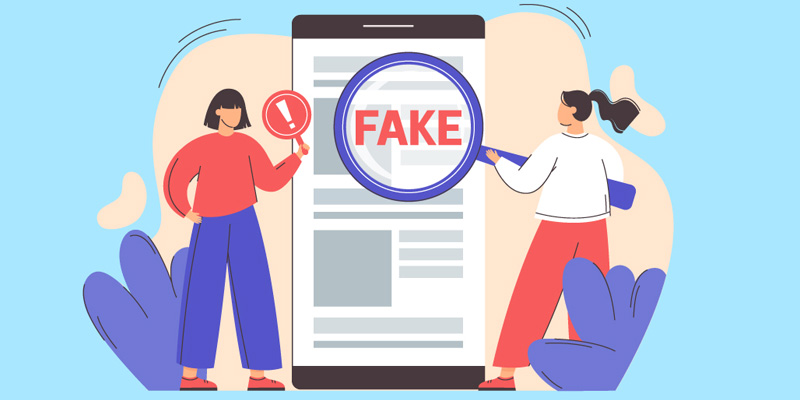Contents
Defamation Claims: The Essentials of Tort Law for Individuals and Businesses
In tort law, defamation occurs when someone makes a false statement about another person, damaging their reputation. The effects can be serious, potentially ruining careers, relationships, and social standing. To navigate defamation claims, it is required to understand the core elements that need to be proven and how these cases balance with free speech. This article will dive into the details of defamation, explore the legal defenses available, and highlight unique factors to consider in business-related defamation cases.
What Is Defamation in Tort Law?
In tort law, defamation refers to harming another person’s reputation by making a false statement about them to a third party, causing damage to their personal or professional reputation. Tort defamation cases often involve proving that the false statements not only caused reputational harm but were made with malicious intent. Defamation can lead to serious consequences for the victim, affecting their career, relationships, and overall societal standing. There are two kinds of defamation: libel and slander in tort law.
Libel in tort refers to defamation that occurs in a written or permanent form. This includes statements in newspapers, magazines, books, online articles, blogs, social media posts, or other written mediums. It can also extend to broadcasts, such as TV or radio, often considered permanent due to their recorded nature. The critical characteristic of libel is its lasting nature, which means the defamatory statement can continue to harm the victim long after it is made, as it can be easily circulated and accessed by others over time.
On the other hand, slander is a distinct form of defamation that occurs through spoken words or any form of non-permanent communication, such as casual conversations, phone calls, or public speeches. Because slander is typically fleeting, it can be more difficult to prove than libel. In some cases, the plaintiff may need to show actual financial harm or damages resulting from the slanderous statement to succeed in a claim. However, in certain circumstances, slander per se allows a plaintiff to claim damages without proof of actual harm if the statement falls into specific categories, such as allegations of criminal conduct, a contagious disease, or professional misconduct.
Key Elements of a Defamation Claim
To successfully establish a defamation claim, the plaintiff must typically prove the following key elements:
1. False Statement
The defendant made a false statement of fact about the plaintiff. The statement must be presented as a fact, not as an opinion, exaggeration, or hyperbole. In order to succeed in a claim for the tort of defamation, the plaintiff must prove that the false statement caused harm to their reputation.

2. Publication
The second key element is ‘Publication ‘. This means the false statement was communicated to at least one person other than the plaintiff. It could be through spoken words (slander), written words (libel), or other forms of communication, including social media posts.
3. Fault
Depending on the status of the plaintiff, the defendant was at fault, either through negligence or actual malice. For private individuals, the standard is usually negligence, while public figures must prove actual malice (knowledge that the statement was false or reckless disregard for its truth).
4. Harm
The plaintiff suffered harm due to the false statement, such as damage to reputation, emotional distress, or financial loss. In some cases, certain statements (e.g., accusations of a crime) are considered defamatory per se, meaning harm is presumed.
5. Unprivileged
The fifth key element is ‘Unprivileged ‘. This means any legal privilege did not protect the statement. Some communications, such as those made in judicial proceedings, legislative debates, or between spouses, are protected and cannot form the basis of a defamation claim.
Defamation vs. Freedom of Speech
Defamation and freedom of speech are two important but sometimes conflicting legal concepts. Freedom of speech gives people the right to express their thoughts, opinions, and beliefs without fear of censorship. It is a fundamental right in many countries, like the United States, where it is protected by the First Amendment. However, that right does not mean people can say anything they want without consequences. Defamation comes into play when someone makes a false statement that harms another person’s reputation. Whether it is written (libel) or spoken (slander), defamation can cause serious damage to someone’s personal or professional life, and the person making the statement can be held legally responsible.
Finding the balance between free speech and protecting people from defamation is tricky. Courts usually protect opinions and fair criticism, but false statements that harm someone’s reputation are not covered by free speech. This becomes even more complicated when it comes to public figures, who have to prove that harmful statements were made with actual malice, meaning the person knew it was false or did not care whether it was true or not. While everyone has the right to speak their mind, defamation laws exist to prevent false, harmful statements from causing lasting damage.
Common Defenses of Defamation in Tort
In defamation cases, a defendant can raise several defenses to challenge the claim. Some common defenses include:
Truth: In the realm of defamation, truth reigns supreme. It stands as the most robust defense, capable of overturning even the most damaging statements. If the statement in question is true, it is not considered defamation, regardless of its potential harm.
Opinion: Statements that are opinions, rather than statements of fact, are generally shielded from defamation claims. This protection of opinions provides a secure space for freedom of expression, ensuring that even if an opinion implies an untrue fact, it may still be actionable.
Privilege: Certain communications are protected by privilege. There are two types:
- Absolute privilege: This applies in specific situations, such as statements made in judicial proceedings, legislative debates, or certain government communications.
- Qualified privilege: This applies when a person has a legal, moral, or social duty to make a statement, such as in a job reference. The privilege is lost if the statement is made with malice.
Consent: A powerful defense in defamation cases, consent can completely nullify the plaintiff’s claim. If the plaintiff consented to the publication of the defamatory statement, they cannot later claim defamation.
Fair Comment: This defense applies to matters of public interest, where the defendant can argue that the statement was made as a fair and honest opinion about a matter that is legitimate of public concern.
Innocent Dissemination: This defense is available for secondary publishers, like internet service providers or news vendors, who were not aware of the defamatory content and were not involved in its creation.
Retraction and Apology: In some jurisdictions, retracting the defamatory statement and offering an apology may mitigate damages or serve as a defense.
These defenses allow defendants to challenge defamation claims based on the nature of the statement, the context in which it was made, and the truthfulness or intent behind the statement. This recognition of context ensures that each case is considered in its unique circumstances.
Special Considerations for Businesses
Business Defamation
Defamation does not just impact individuals; businesses are equally vulnerable to false and damaging statements. Business defamation occurs when a company is targeted by false claims that tarnish its reputation, potentially leading to the loss of customers, a decline in profits, or a damaged business relationship. Businesses must be vigilant in monitoring public perception and can take legal action to recover damages. However, to succeed in a defamation lawsuit, the business must prove that the statement was false, published to a third party, and directly harmed the company’s reputation or finances.
In today’s digital age, defamatory content can quickly go viral, amplifying its reach and harm. Businesses need strategies to manage social media crises and negative reviews effectively. Proactive reputation management, including customer engagement and positive press, can help mitigate the impact of defamation.
Product Disparagement (Trade Libel)
Product disparagement, also known as trade libel, is a subset of business defamation. It involves false or misleading statements about a business’s products or services rather than the business in general. If the statements influence potential customers to avoid purchasing the affected products, this type of defamation can severely damage a company’s market share.
Sometimes, companies disguise disparagement as aggressive marketing by downplaying competitors’ products. This practice is illegal if the statements are false or misleading. The business must show that the disparaging remarks were made publicly, are factually inaccurate, and resulted in measurable financial loss.
Intellectual Property Defamation
Defamation may sometimes target a business’s intellectual property, such as trademarks, patents, or trade secrets. If false statements lead to a decline in the value of intellectual property or confusion among consumers, a business can seek damages. For instance, false claims about the quality or authenticity of a patented product could damage its marketability and cause significant revenue loss.
Financial Defamation
Financial defamation occurs when false statements about a business’s financial health or practices are made public, causing a loss of investor confidence or access to credit. This can be particularly harmful to publicly traded companies, where stock prices may be impacted by misleading financial rumors. For example, incorrect claims that a company is going bankrupt could cause investors to sell their shares, leading to a sharp decline in stock value.
Employee-Related Defamation
Businesses should also be aware of the potential for defamation arising from employee behavior or internal policies. For example, defamation could occur if false statements about an employee’s conduct negatively affect the company’s culture or public image. Managing internal defamation between employees or by disgruntled former staff is important for maintaining morale and preventing larger PR crises.
Damages in Defamation Cases
Tort defamation can lead to substantial financial damages if the plaintiff proves that false statements caused reputational or economic harm. Proving damages in defamation cases varies depending on the jurisdiction and the type of defamation (slander or libel in tort). In defamation cases, damages refer to the monetary compensation awarded to a plaintiff for harm caused by defamatory statements. These damages are meant to address the harm to the plaintiff’s reputation, emotional distress, and any financial losses they may have suffered. Depending on the case, damages can be general, special, punitive, nominal, or aggravated, each addressing different aspects of the harm.
General damages, a key component in defamation cases, are awarded to compensate for non-monetary harm, such as reputational damage and emotional distress. These are presumed in some cases, mainly when the defamatory statement is inherently damaging, like accusing someone of a crime. The plaintiff does not need to show concrete financial losses to be eligible for general damages.
Special damages, on the other hand, cover quantifiable financial losses caused by defamation. These may include lost income, business losses, or medical expenses. Plaintiffs must provide evidence that directly links these financial losses to the defamatory statement, making the burden of proof higher than with general damages.
Punitive damages are awarded in cases where the defendant’s behavior was particularly malicious or reckless. Unlike compensatory damages, which aim to restore the plaintiff, punitive damages are meant to punish the defendant and deter similar actions in the future. These are awarded when the court deems the defendant’s conduct especially harmful.
Finally, nominal and aggravated damages play specific roles. Nominal damages acknowledge that defamation occurred without significant harm, leading to a small financial award. Aggravated damages are given when the defendant’s conduct was particularly offensive or exacerbated the harm, such as acting with cruelty or spite toward the plaintiff. These damages aim to account for the increased injury to the plaintiff’s reputation or emotional well-being.
Statutes of Limitation
In defamation cases, the statute of limitations defines the time period within which a lawsuit must be filed following a defamatory statement. These time limits differ across jurisdictions, making it essential to understand the specific rules to ensure timely legal action. For instance, in the United States, the statute of limitations for defamation varies by state, generally ranging from 1 to 3 years. Most states, including California, New York, and Texas, impose a 1-year limit. Similarly, in the United Kingdom, defamation claims must be initiated within 1 year of publication. In Canada, the limitation period is typically 2 years, though this can vary by province; both Ontario and British Columbia follow the 2-year rule.
Final Thoughts
Defamation in tort law presents significant legal challenges for individuals and businesses alike. Tort defamation cases can be complex, requiring the plaintiff to demonstrate that the defamatory statement was published to a third party and resulted in harm. The damage caused by false statements can have far-reaching consequences, from ruining personal reputations to impacting corporate profitability. Understanding the distinctions between libel and slander and the critical elements required to prove a defamation claim is essential for anyone navigating this complex area of law. Moreover, balancing defamation laws with the right to free speech remains a delicate legal dance, particularly in cases involving public figures or business interests.
Defamation poses unique business threats, including product damage, financial stability, and intellectual property. Proactive reputation management and swift legal action can help mitigate these risks. Ultimately, a successful defamation claims hinges on proving falsehood, intent, harm, and lack of privilege while considering available defenses like truth or opinion. Whether protecting an individual’s honor or a company’s bottom line, the law provides remedies to address the lasting impact of defamatory statements.
Disclaimer: The content provided on this blog is for informational purposes only and does not constitute legal, financial, or professional advice.







